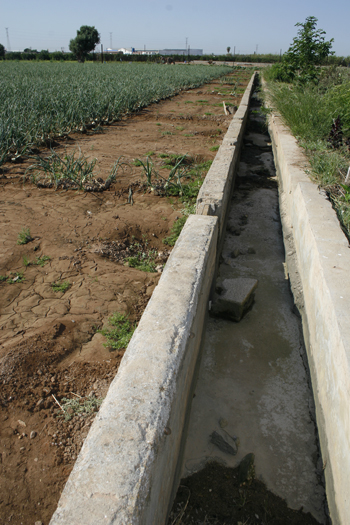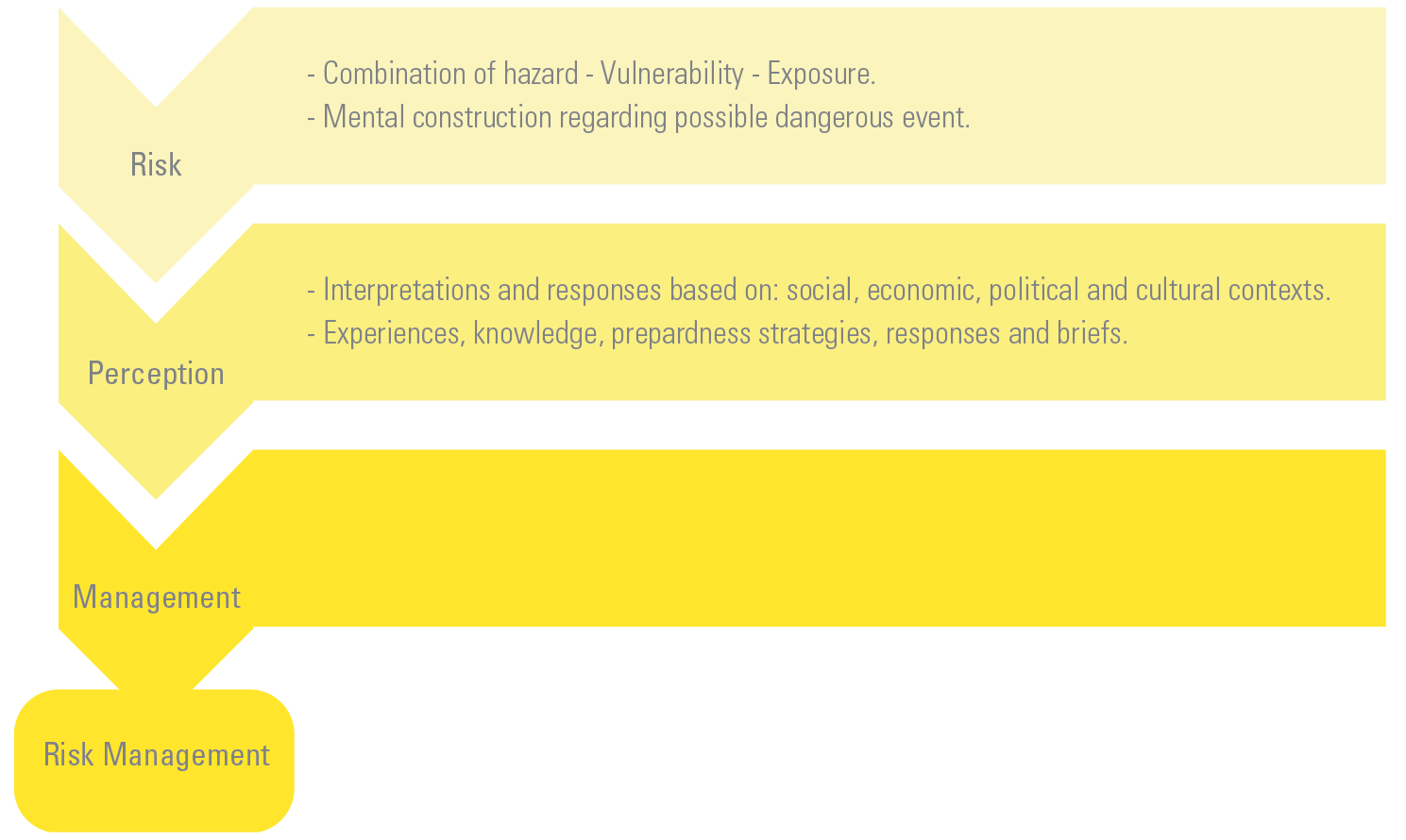Risk perception
Human beings understand risk broadly from two points of view: The analytic view and the experiential view. The first view is normative and requires conscious control that brings logic, reason, and scientific deliberation to dealing with hazard management. The second view refers to the intuitive reactions to danger. This latter view remains today as one of the most common ways to respond to risk.
Experiences determine, in many cases, the responses to current risks, and these experiences are closely related to the perceptions of risk. Perception is our sensory experience of the world around us; that is, the way we think about or understand something. It involves the recognition of environmental stimuli and actions in response to these stimuli. Hence, risk means different things to different people. Actions and understanding of risks are learned by socially and culturally structured conceptions and evaluations of the world and how it might be. Important aspects are identifying the cultural and social embedding of risk, and identifying which characteristics are in place when individuals and communities act and deal with the risk of natural hazards. This is important in the context of individuals and social groups, such as multi-sector partnerships.
In cases in which people have poor or no perception of a particular risk, their reaction might be inappropriate or even harmful (e.g. building houses in flood-prone areas). In other cases in which the perception of risk is framed by historical and social events, risk awareness and perception are high, and people and institutions show enhanced preparedness in order to reduce potential harms. Literature shows that risk perception largely influences risk management and therefore determines whether risk management is successful in reducing vulnerability.
In the ENHANCE project, the goal has been to enhance multi-sector partnerships (MSPs) to manage catastrophic natural disasters in Europe. In order to enhance risk management, we need to understand what kind of risk management cultures exist, and identify and assess indicators that represent cultures of risk.
The project followed the following approach:
- We developed the basis for providing criteria to analyse the regionally and culturally embedded perception of natural hazards and (economic and human) resources, as well as to analyse the recent handling of risk events. These criteria might help other areas in Europe with similar contexts and risks to develop similar risk management strategies.
- We developed and implemented a standardised online survey to find out how risk management practices are shaped by risk perceptions in MSPs. More specially, we investigated experiences with past risk events and assumptions about future risks, how these relate to concrete policies and measures adopted within individual organisations and in the MSPs, and which risk management cultures can be identified. The survey targeted, particularly, representatives of organisations dealing with natural hazard risks.
Factors influencing risk perception
Several factors determine how risk is seen by people and organisations. Individuals, institutions, communities or societies may perceive risks differently due to diverse cultures or beliefs.
Figure 3.1.
Figure 3.1. shows factors determining the perception of risk, which is a complex combination of innate biases and experience, i.e. cultural-, socio-political- and emotional factors. These factors are both collective and individual.
Risk management and risk perception
The aim of risk management is to minimise the potential harm of a risk event by implementing strategies and actions to control and reduce risk.
Since risk is perceived differently by people, risk management approaches are influenced by what people perceive as 'risky'. Risk management strategies adopted by MSPs are highly steered by the individual actors’ subjective perceived probabilities of adverse extreme events, i.e. their risk perception and risk preferences. The subjective probability as the perceived risk is usually responsible for people’s behaviour and shapes risk management.
Figure 3.2.
Risk management and risk perception.
Assessing the relation between risk perception and risk management
Following two features, risk perception determining risk management and the consideration of risk as a natural hazard and its consequences, we used a qualitative research method to analyse and compare different case studies.
An online questionnaire was made available to all MSPs in the ENHANCE project for gathering data from organisations dealing with natural hazards. Furthermore, we have described the risk cultures of such organisations avoiding focussing on individuals. We were particularly interested in organisations that are creating alliances with other organisations and are pursuing a common objective. We assessed which elements enhance risk management practices within the cooperative action of an MSP.
The survey showed the main characteristics of risk cultures being:
- Decision-making processes made on a consensus basis.
- Involvement of all members of the partnership in the risk management process.
- Expert knowledge as a predominant key value.
- Importance of historical knowledge: experiences in the past help with subsequent events. E.g. creation of risk management models, defence programs, etc.
- Activities to prepare for risk management: data collection and empirical analysis including systematic monitoring. E.g. warning systems, sensing networks and remote sensing, GIS, systems of indicators, etc.
- Key policies to improve risk assessment include risk mapping and regular monitoring.
- Most partnerships are involved in national platforms for disaster risk reduction carrying out coordination and being responsible for finance and information.
- Key measures to support prevention and mitigation are awareness raising (around 71%) andearly-warning systems (around 80%).
- Long-term post-disaster policies and compensations funds to ensure recovery after a disaster event.




